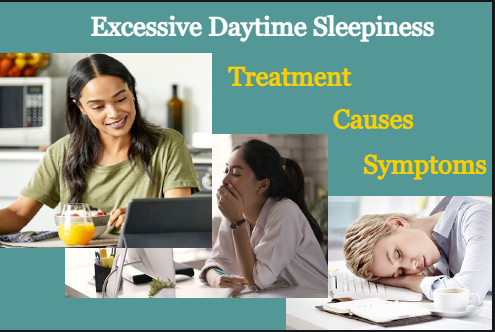Excessive Daytime Sleepiness Symptoms, Causes, Treatment
Excessive daytime sleepiness (EDS) is a condition characterized by persistent sleepiness and an overwhelming urge to nap during the day, affecting daily functioning and productivity. Understanding its symptoms, underlying causes, and potential treatments, including medications like Artvigil 150, can shed light on managing this challenging issue.
Symptoms of Excessive Daytime Sleepiness:
Constant Fatigue: Feeling persistently tired despite getting adequate sleep.
Difficulty Concentrating: Finding it hard to stay focused or alert during daily activities.
Microsleep Episodes: Brief, involuntary periods of sleep lasting a few seconds, often unnoticed by the person experiencing them.
Memory Problems: Difficulty remembering or retaining information due to impaired cognitive function.
Mood Changes: Irritability, mood swings, or increased stress due to sleep deprivation.
Causes of Excessive Daytime Sleepiness:
Sleep Disorders: Conditions like sleep apnea, narcolepsy, or restless legs syndrome can disrupt sleep and lead to EDS.
Insufficient Sleep: Not getting enough sleep regularly due to work, lifestyle, or other factors.
Medical Conditions: Chronic illnesses such as depression, diabetes, or thyroid disorders can contribute to EDS.
Medications: Certain medications, especially those that induce drowsiness as a side effect, can lead to daytime sleepiness.
Lifestyle Factors: Excessive alcohol consumption, irregular sleep schedules, or poor sleep hygiene can also cause EDS.
Treatment for Excessive Daytime Sleepiness:
Lifestyle Changes: Establishing a consistent sleep schedule, maintaining good sleep hygiene, and creating a sleep-conducive environment can improve sleep quality and reduce EDS.
Behavioral Therapies: Cognitive-behavioral therapy for insomnia (CBT-I) can address sleep-related issues and promote better sleep patterns.
Medications: Prescription medications like Artvigil 150 (containing Armodafinil) may be used to manage EDS by promoting wakefulness and alertness during the day.
Artvigil 150 for Excessive Daytime Sleepiness:
Mechanism of Action: Armodafinil, the active ingredient in Artvigil 150, works similarly to Modafinil by enhancing wakefulness. It’s believed to affect certain neurotransmitters in the brain, promoting alertness without causing the jittery effects associated with stimulants.
Effectiveness: Studies suggest that Armodafinil may be effective in improving wakefulness and reducing EDS associated with conditions like narcolepsy or shift work sleep disorder.
Considerations: Like any medication, Artvigil 150 may have side effects such as headache, nausea, or insomnia. It’s essential to use it under the guidance of a healthcare professional and to discuss potential benefits and risks.
Additional Strategies for Managing Excessive Daytime Sleepiness:
Regular Exercise: Engaging in physical activity can promote better sleep and reduce daytime sleepiness.
Stress Management: Practices like meditation or relaxation techniques can improve sleep quality and reduce stress-related EDS.
Dietary Considerations: Avoiding heavy meals close to bedtime and limiting caffeine intake can contribute to better sleep.
Conclusion:
Excessive daytime sleepiness can significantly impact daily life and productivity. While lifestyle changes and behavioral therapies play a crucial role in managing EDS, medications like Artvigil 150 may be considered in specific cases under the supervision of a Healthcare professional. Understanding its symptoms, addressing underlying causes, and adopting a multifaceted approach to treatment can contribute to better management of excessive daytime sleepiness.
